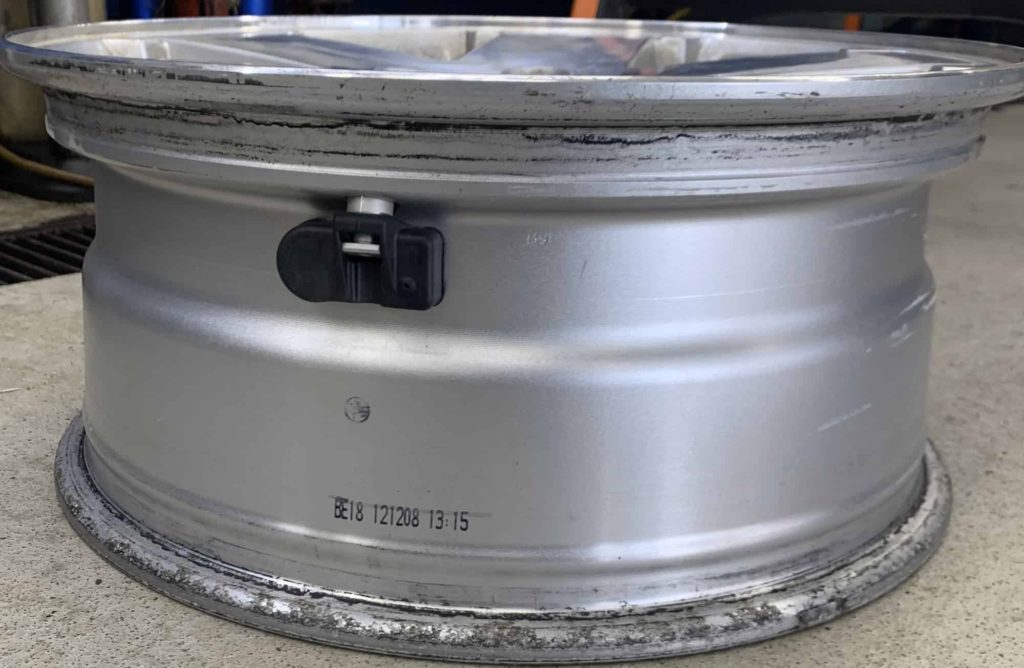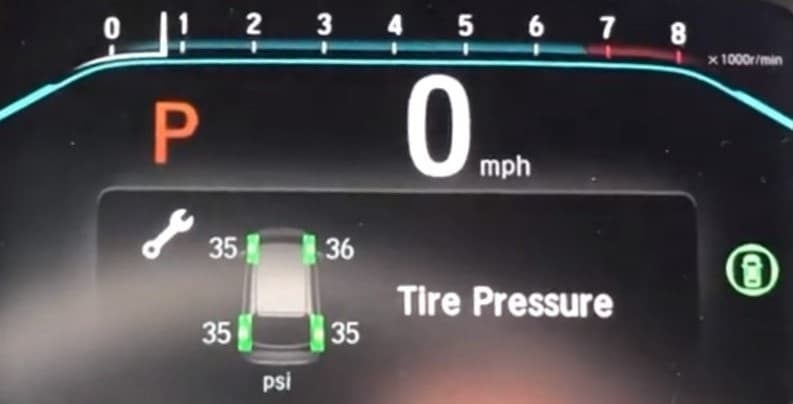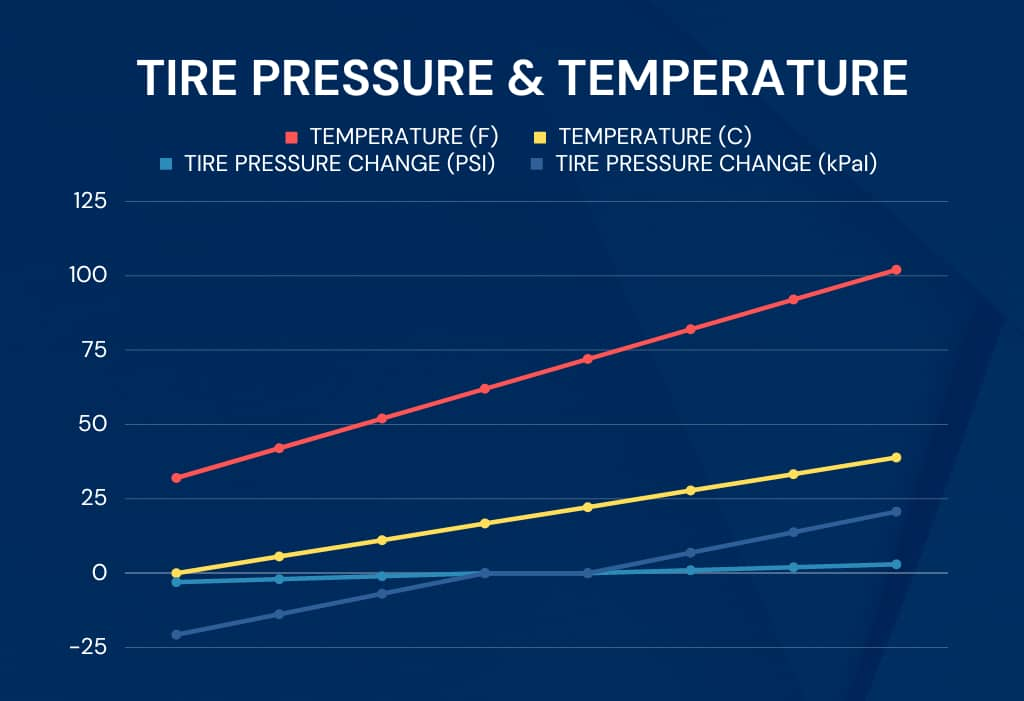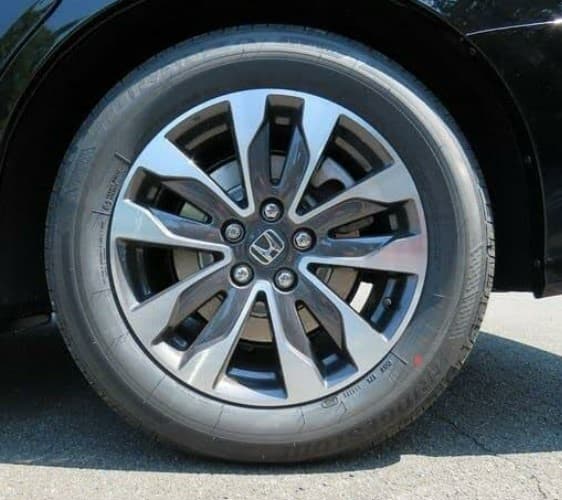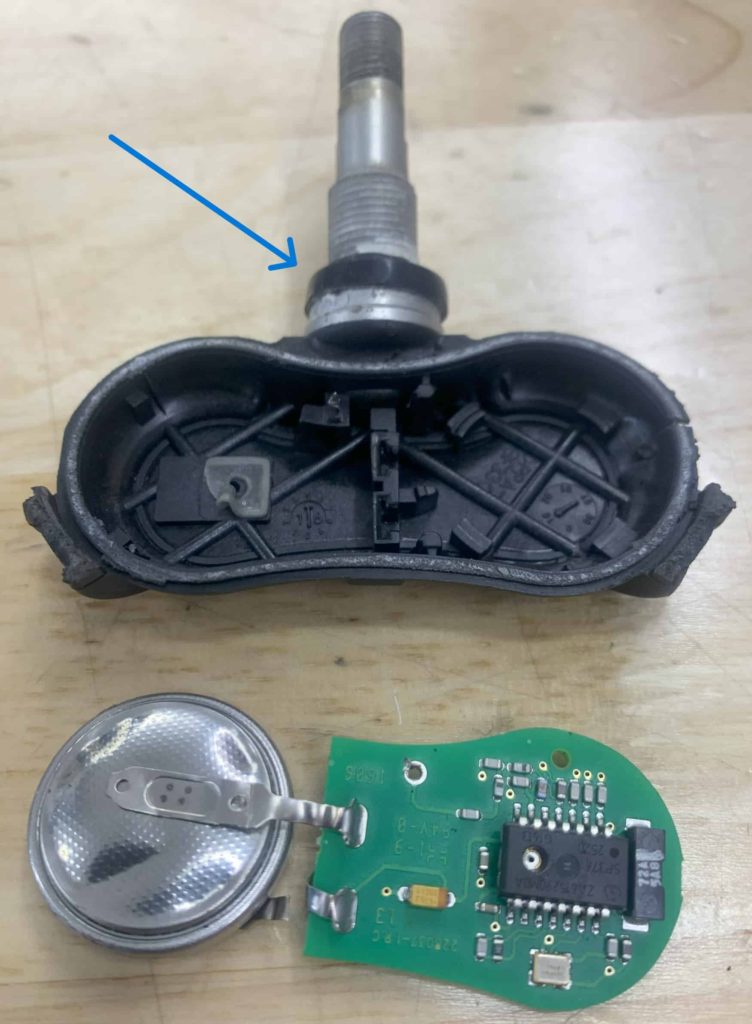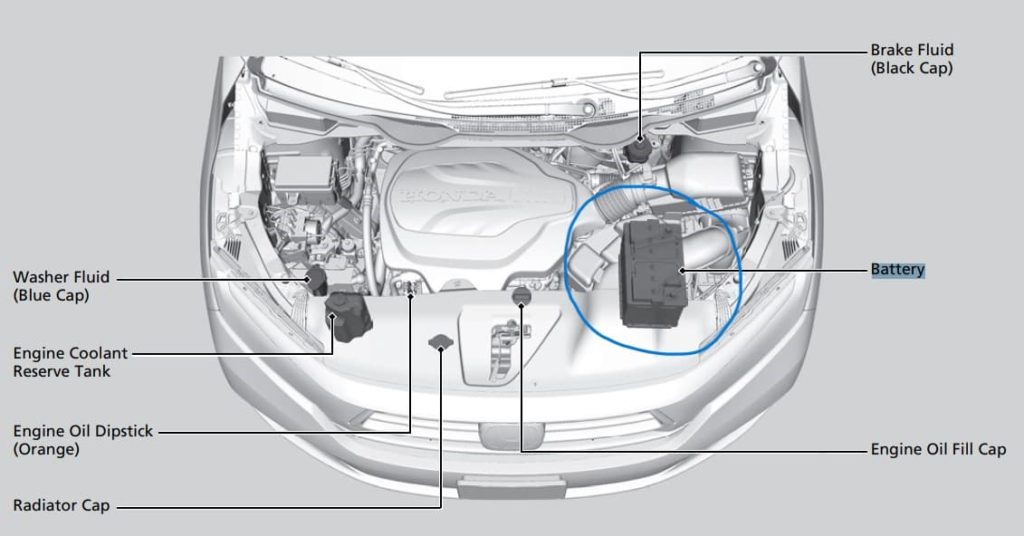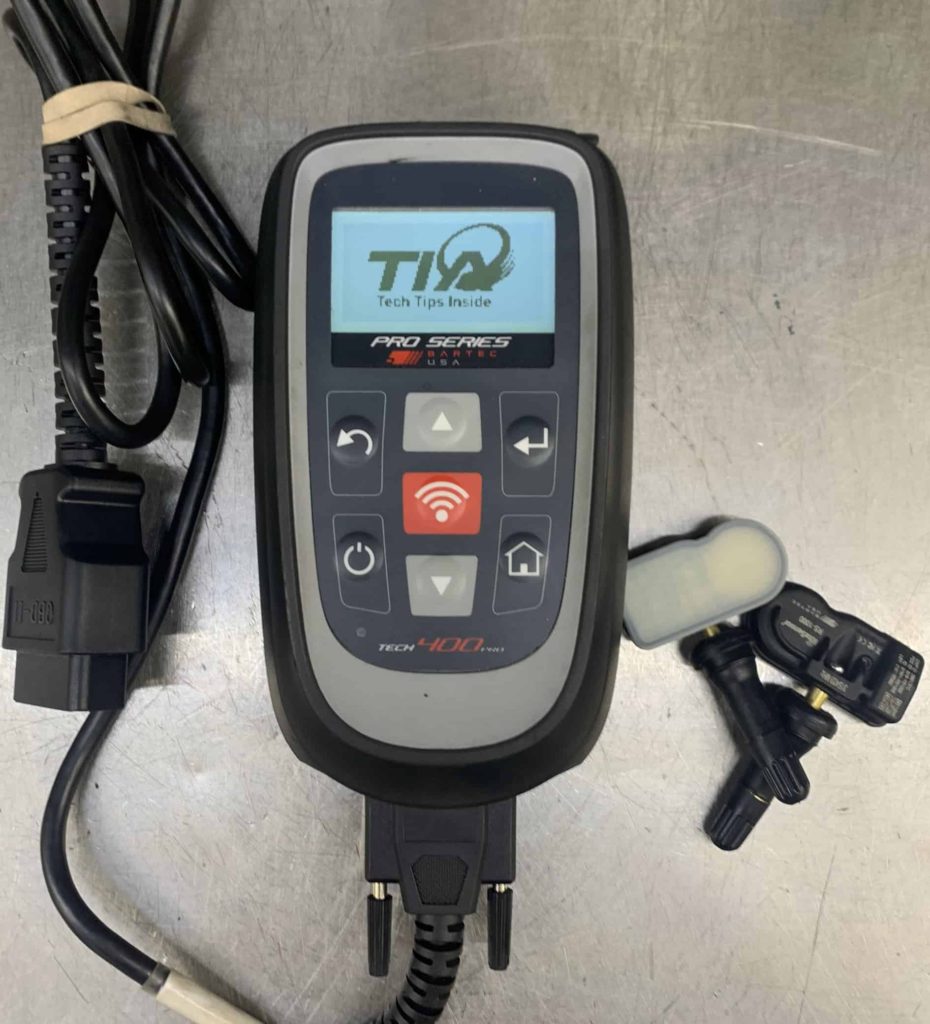How the Honda Odyssey Tire Pressure Monitoring System Works
TPMS Sensors: Each tire on the Honda Odyssey, including the spare in some models, is equipped with a TPMS sensor. These sensors are designed to measure the air pressure and temperature within the tire.
Pressure Measurement: When the vehicle is on, the TPMS sensors continually measure the tire pressure. The sensors transmit this data to the TPMS control module via radio waves.
Data Transmission: The TPMS sensors are battery-powered and transmit data wirelessly to the TPMS control unit, which is a part of the car’s onboard computer system. They transmit data periodically, but the rate will increase if a sudden change in tire pressure is detected.
TPMS Control Unit: The TPMS control unit continuously monitors these readings, checking that the tire pressure is within the manufacturer’s recommended range. The recommended tire pressure for the Honda Odyssey may vary depending on the model year, but it’s typically around 30-35 PSI (pounds per square inch).
Warning Light: If any of the tire pressures fall below or exceed the recommended range, the TPMS control unit will trigger the TPMS warning light on the dashboard. This light is a yellow symbol of an exclamation mark inside a tire.
Direct Readout: Newer Honda Odyssey models have an advanced TPMS system that provides direct readouts. These show the exact pressures of each tire, not just a warning light. The data can be accessed via the vehicle’s infotainment system.
Corrective Action: Once the warning light is on, it is up to the driver to take corrective action.
Error codes: The TPMS will also give error codes and specific details about which tire sensor has problems if scanned with a TPMS diagnostic tool.
Steps to Reset 2018-2023 Honda Odyssey Tire Pressure Light
Step 1: Check and Adjust the Tire Pressure to the correct levels.
Step 2: Turn the ignition to the ON position or have the vehicle running.
Step 3: Select the HOME button on the top left of the infotainment system.
Step 4: Select SETTINGS on the infotainment screen.
Step 5: Select VEHICLE on the infotainment screen.
Step 6: Select TPMS CALIBRATION.
Step 7: Select CALIBRATE.
Steps to Reset 2011-2017 Honda Odyssey Tire Pressure Light
Step 1: Check and adjust the tire pressure to the recommended levels.
Step 2: Use the UP and Down arrows on the steering wheel to scroll and select VEHICLE SETTINGS. (the middle button between the up and down arrows is select)
Step 3: Select TPMS CALIBRATION.
Step 4: Select CALIBRATE.
Step 5: Drive the Odyssey for a few minutes at speeds over 20 Mph.
Honda Odyssey Current Tire Pressures
To access and check the current tire pressure on your Odyssey, use the buttons on your steering wheel:
Switch the ignition to ON.
Select the “Home” button.
Select the up or down arrows on the steering wheel until the “Maintenance” option surfaces.
Select the “ENTER” button and navigate to “Tire Pressure” by pressing the up or down arrow button.
Select the “ENTER” button. Now, the tire pressure details will be displayed on the driver information interface.
When to Reset Your Honda Odyssey TPMS
After tire pressure has been corrected or adjusted.
After a TPMS sensor has been swapped or replaced.
After a tire rotation.
After tire balances or wheel alignments.
After any tire or wheel has been replaced.
After your Honda battery dies, is recharged, or jumped.
After the TPMS light turns on.
Tire Pressure
How Weather Affects Tire Pressure
Your Honda Odyssey tire pressure can be significantly influenced by weather conditions. When the temperature drops the air inside the tires contracts, leading to a reduction in tire pressure. The chart above shows that for each 10-degree Fahrenheit drop in temperature, tires may lose approximately 1-2 psi of pressure. On the other hand when temperatures rise the air inside the tires expands, which will increase the tire pressure.
How to Check & Adjust Tire Pressure
Prepare Your Tools: You’ll need a reliable tire pressure gauge. While the TPMS in the vehicle provides the current pressures, a manual gauge will give you a precise measurement.
Measure Current Pressure: Wait for the tires to cool down if you’ve driven recently because heat will increase pressure. Unscrew the valve cap from the tire’s valve stem then press the tire gauge onto the valve stem and read the pressure.
Compare with Recommended Pressure: Check the vehicle’s recommended tire pressure. The recommended pressure can be found on a yellow or white sticker on the driver’s side door jamb, or in the owner’s manual. It’s typically 35 PSI for the Honda Odyssey.
Adjust Pressure if Necessary: If the tire pressure is lower than recommended, use an air compressor to inflate the tire. If it’s higher, let some air out until it matches the recommended pressure.
Recheck Pressure: After adjusting, measure the pressure again with your tire gauge to ensure all of the tires are at the correct level.
Repeat for All Tires: Repeat steps 2 to 5 for each tire, including the spare if your vehicle has one.
Valve Cap: Don’t forget to replace the valve caps on the valve stems when you’re done. They prevent moisture and dirt from getting inside the valve stems.
2023 Honda Odyssey Tire Pressures
TIRE SIZE | FRONT PSI | REAR PSI |
235/60R18 | 35 | 35 |
235/55R19 | 36 | 36 |
SPARE | 60 | 60 |
Impacts of Driving With Underinflated Tires
Driving a Honda Odyssey with underinflated tires can have several negative impacts:
Reduced Fuel Efficiency: Underinflated tires can lower gas mileage, as they cause increased rolling resistance causing the engine to work harder to move the vehicle.
Poor Handling: Underinflated tires will not respond as quickly or effectively to steering which can make the vehicle feel sluggish or unresponsive and decrease overall handling and ride comfort.
Increased Tire Wear: When tires are underinflated more of the tire’s surface area touches the road, leading to faster and uneven tire wear. This can shorten the lifespan of your tires significantly.
Overheating: Underinflated tires can cause excess heat buildup. This can potentially lead to tire failure or blowouts especially when driving at high speeds for prolonged periods.
Increased Risk of Accidents: The combination of poor handling, increased braking distances, and the risk of a blowout make underinflated tires a serious safety hazard.
Damage to the Vehicle: In some severe cases, continually driving with underinflated tires can lead to damage to the vehicle’s wheels and suspension system.
What are Common Causes for the Low Tire Pressure Light to Turn On?
Spare Tire: If you’re driving your Honda Odyssey with a compact spare tire, also known as a “donut,” the tire warning light will be activated.
Seasonal Weather temperature changes: A drop in air temperature can lead to a reduction in tire pressure, which may trigger the tire warning light.
Tire puncture or leak: Nails, screws, or other sharp objects on the road can penetrate the tire’s tread causing an air leak.
Faulty TPMS sensor: Damaged or malfunctioning tire pressure sensors can cause the tire pressure light to flash and not give accurate pressure readings.
Tire damage: Driving over potholes or bumping into curbs can inflict structural damage such as bulges and bubbles on the tire sidewall. These damages can subsequently cause an air pressure leak on the sidewall of the tire.
Sensor battery life: TPMS sensors run on battery power and will ultimately die after a period of time.
Recent tire rotation or replacement: Following a tire rotation or replacement, it might be necessary to recalibrate the tire pressure monitoring system to prevent tire location issues. (After a rotation the TPMS can still think the front tires are in the rear and vice versa.)
Valve stem issues: A damaged or leaking valve stem can result in tire pressure loss, activating the air pressure warning light. The rubber gasket positioned between the sensor base and the valve stem can experience dry rot which diminishes its ability to seal and can lead to air leakage. (it can be replaced without having to replace the entire sensor)
Wheel or rim issues: Wheels that are cracked or damaged can cause air to escape causing low tire pressure light to come on. This is very common with low-profile tires, as they provide less cushioning to the wheel and rim itself.
Altitude changes: The air pressure can change and sometimes set off the low tire pressure light after a major change in altitude.
Natural pressure loss: Due to temperature fluctuations and tire dry-rot, tires that sit will gradually lose air pressure naturally.
TPMS Software Updates: Sometimes Honda may put out a TPMS software update.
Is it Safe to Drive With the Tire Light On?
Identifying why the tire light has been triggered in your Honda Odyssey is critical when evaluating the safety of continuing to drive with the warning light on. Are there any punctures in the tire? Is the tire deflating? If so, is the air seeping out gradually or rapidly? Are the tires in good shape but the pressure sensors are faulty? While there might be scenarios where it’s safe to keep driving despite the tire light being on, it usually poses a significant risk. Understanding the root cause of the issue is fundamental in making a safe decision about whether and for how long you should continue driving your Honda Odyssey.
Honda Odyssey TPMS Malfunction Indicator
Your Honda Odyssey has a TPMS malfunction indicator that lets you when the entire tire pressure system isn’t working properly. The malfunction indicator uses the same dashboard tire light as the low tire pressure alert (yellow exclamation point), but it has a different function. If the tire pressure monitoring system has an issue, the warning light will flash for 60 seconds before staying on. This will keep happening every time you start the car until the problem is fixed.
Tire Pressure Sensor Batteries
Each tire pressure sensor operates independently using an integrated battery, akin to those used in traditional wristwatches or key fobs. It’s crucial to acknowledge that these batteries are non-replaceable because they are directly attached to the sensor’s circuitry. Consequently, when the battery drains or is close to depletion the entire sensor requires replacement. Factors such as driving conditions and climate variations can impact the lifespan of the battery. However, on average these sensor batteries are designed to last between 5 to 10 years. Personally I’ve replaced a lot of TPMS sensors and have seen some batteries last 3 or 4 years and some last 20 years.
Troubleshooting the Tire Pressure Warning Light
If you are having problems with your tire pressure light, there are a few simple options you can try to turn it off.
Is the Tire Losing Air?
Double check your tire pressure to ensure that it is still at exactly 35 Psi. If the pressure has dropped, a leak or puncture could be the probable cause. If the tire pressure light turns off after putting air in the tires and then comes back on minutes, hours or days later, you have a tire leak.
Wake a Sleeping TPMS Sensor
If your tire light is on and you are sure your tires are not losing air, sometimes the sensor needs to be “woken” up. Figure out which sensor is the issue and release about 15 or 20 Psi from the tire and then fill it back to 35 Psi plus an extra 10 Psi. Now your tire is at 45 Psi. Now you need to drive your Honda Odyssey around the block a few times. Do not drive on highways or anywhere with lots of cars just out of caution. Drive the vehicle for about 10 or 15 minutes and then park. Re-adjust the tire pressure back to 35 Psi and drive the car again.
Reset the Honda Odyssey ECU
In situations where all other solutions have been explored and your tires show no signs of leakage, the diagnostic trouble codes from your Honda Odyssey’s electronic control unit (ECU) can be manually deleted. This is accomplished by disconnecting the negative terminal of the 12-volt battery. After allowing it to sit disconnected for a few minutes, reconnect the terminal. This action clears all error codes from the ECU, including the tire pressure error code that prompts the tire pressure warning light. If after executing this procedure the tire light deactivates and then reactivates, it’s probable that a sensor is faulty.
Check the Battery Status of Each Pressure Sensor
To execute this diagnostic process, you’ll require a TPMS programming or relearning tool. While each TPMS tool will have its own unique features, the procedure generally remains the same. You’ll need to scan each pressure sensor by positioning the TPMS tool adjacent to the tire valve stem and choosing a “test” option. Once all four pressure sensors have been scanned, the tool will provide you with a status report for each sensor, including information about their battery life. If the battery life is “low” this means that sensor needs to be replaced.
Is the Tire Light On When You Start the Car but then Turns Off Once you Start Driving?
If the tire light is on when you start your car for the first time that day then goes off as you drive, this means the tire pressure is probably slightly under the required levels it’s supposed to be. This can happen because the tires start off cold before you’ve driven that day (say at 31 Psi) and as you drive the tires heat up and the pressure increases (say to 35 Psi) which turns off the tire warning light. The solution to this issue is to make sure every tire is at exactly 35 Psi.
Tire Leaks and Solutions
How to Find a Tire Leak
To locate a tire leak in your Honda Odyssey, begin by checking the air pressure in all 4 tires to pinpoint the one that’s underinflated. Inflate the underinflated tire to at least 35 Psi because detecting a leak in a fully deflated tire can prove difficult. Next, create a soapy water solution (mix soap and water) in a spray bottle (or use Windex) and generously spray it all over the tire. Be sure to saturate the valve stem and bead seal thoroughly and wet the entire tire. Look out for tiny bubbles forming on the tire’s surface. If a leak is present, the air escaping will create minuscule bubbles at the leak site. Detecting these bubbles may require some patience. If the tire is deflating, there’s a leak somewhere, so keep spraying and don’t give up on your hunt!
Are Tire Plugs Safe?
Absolutely! I have plugged hundreds of tires working in auto shops and have rarely come across any issues. They are exceptional at fixing punctures in the tire tread because they form a barrier that stops air leaks. (Don’t forget to remove the object that caused the puncture.) Tire plugs are made from sturdy, rubber-like materials that can withstand changes in the tire’s internal air pressure and temperature. If properly applied, a tire plug will last for the remainder of the tire’s life. However, it’s crucial to remember that tire plugs aren’t intended for repairing damage to the tire’s sidewall.
Are Tire Sealants Safe?
Tire sealants should be deployed only in urgent, desperate circumstances. By introducing a tire sealant via the tire valve stem, you’re essentially forcing a fluid inside the tire. This action can harm the tire pressure sensor and disturb the tire’s balance. If you resort to using a tire sealant, we advise taking your Honda directly to a tire service center and informing them that you’ve used a tire sealant.
Tools to Keep in the Car to Tire Emergencies
There are a number of tools we recommend keeping in your Honda Odyssey for emergency tire situations. These include:
impact gun to loosen lug nuts
19mm, 21mm or 22mm socket for lug nuts
Tire plugs and tire plug kit
Pliers
Tire pressure gauge
Extra valve caps.
Are TPMS Systems Legally Required?
In many regions, including the United States and Europe, it’s legally mandated for vehicles to come equipped with Tire Pressure Monitoring System (TPMS) sensors. The TREAD Act, implemented in the U.S. in 2000, dictates that all vehicles manufactured after September 2007 must include a TPMS. Primarily targeting vehicle manufacturers, this law is designed to enhance road safety by notifying drivers of substantial tire pressure alterations. Since November 2012, European regulations have also required all new passenger vehicles to be outfitted with a TPMS. These directives aim to decrease the number of accidents triggered by tire-related complications.
Everything in this article is applicable to all 2024 Honda Odyssey models and trims including the Honda Odyssey EX, EX-L, Sport, Touring and Elite.
Please note that this blog post contains Amazon affiliate links. This means that if you make a purchase through one of these links, we at TPMSRESET.com may earn a small commission at no extra cost to you. We only recommend products that we personally use and believe in. Thank you for supporting us.

